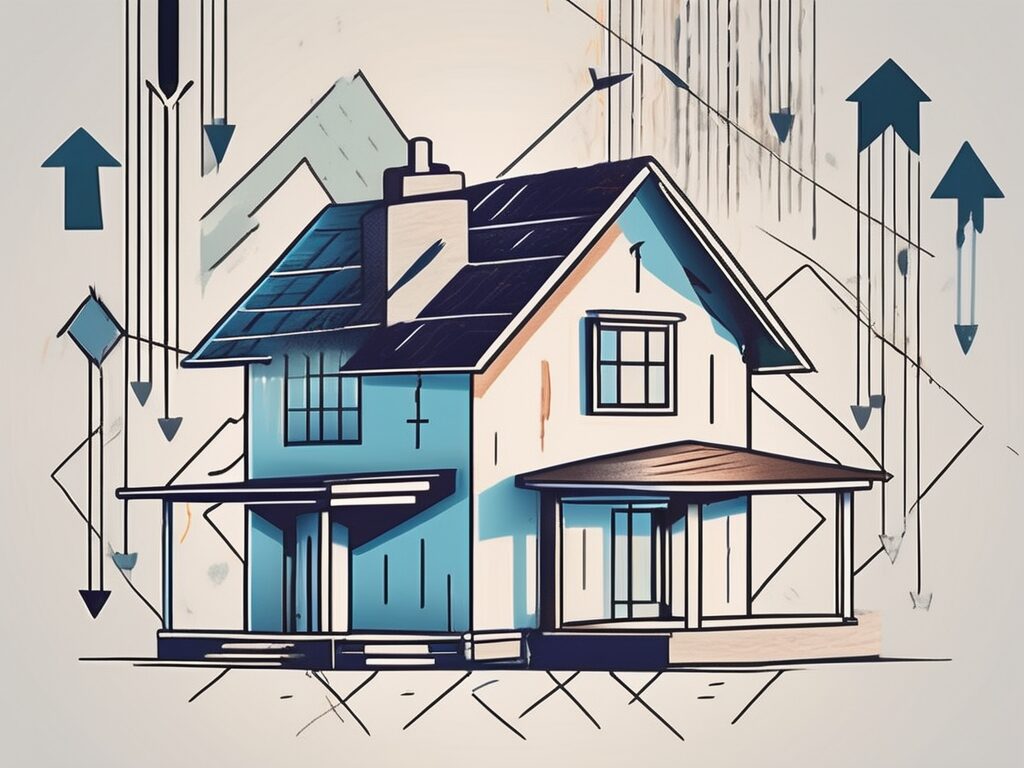
Agent A-Team or Solo Superhero? Finding the Right Real Estate Partner for Your Selling Journey in Wildwood Florida
When it comes to selling your home in Wildwood, Florida,…
January 29, 2024
Sanford, a vibrant city with a thriving real estate market, is not immune to the influence of mortgage rates on home sales. In this article, we will delve into the significance of mortgage rates in Sanford and how they impact the local housing market. By understanding the basics of mortgage rates, analyzing their relationship with home sales, examining Sanford’s real estate market overview, predicting their future impact, and exploring strategies to navigate them, both buyers and sellers can make informed decisions.
Before delving into the impact of mortgage rates on home sales, it is essential to grasp the fundamentals. So, what are mortgage rates? Simply put, these rates represent the interest charged by lenders to borrowers for borrowing money to purchase a home. They fluctuate based on several factors, such as the state of the economy, lender competition, and the borrower’s credit profile.
Understanding mortgage rates is crucial for anyone involved in the real estate market, from first-time homebuyers to seasoned property investors. Mortgage rates are the backbone of the housing market, determining the cost of financing a property. They play a crucial role in shaping home affordability and influencing buyer behavior.
When it comes to mortgage rates, there are a multitude of factors at play. Economic indicators such as inflation, GDP growth, and unemployment rates all have an impact on mortgage rates. For example, when the economy is booming, inflation tends to rise, which can lead to higher mortgage rates. On the other hand, during a recession, mortgage rates often decrease as the Federal Reserve implements policies to stimulate the economy.
But it’s not just domestic factors that influence mortgage rates. Global economic trends also play a role. For instance, if there is instability in the global economy, investors may seek safer investments, such as U.S. Treasury bonds. This increased demand for bonds can lead to lower mortgage rates.
Another factor that affects mortgage rates is the Federal Reserve’s monetary policies. The Federal Reserve has the power to influence interest rates through its control of the money supply. When the Federal Reserve wants to stimulate the economy, it may lower interest rates, making borrowing more affordable for consumers. Conversely, when the Federal Reserve wants to curb inflation, it may raise interest rates, making borrowing more expensive.
Market demand for mortgage-backed securities also plays a role in rate fluctuations. Mortgage-backed securities are financial products that are created when lenders bundle together a group of mortgages and sell them to investors. The demand for these securities can impact mortgage rates. If there is high demand for mortgage-backed securities, lenders may be willing to offer lower interest rates to attract investors.
In conclusion, mortgage rates are a complex subject that is influenced by a variety of factors. Economic indicators, the Federal Reserve’s monetary policies, market demand for mortgage-backed securities, and global economic trends all contribute to rate fluctuations. Understanding these factors is essential for anyone looking to navigate the real estate market and make informed decisions about home financing.
Next, let’s explore the intricate relationship between mortgage rates and home sales. How do these rates impact buyer behavior and home prices in Sanford?
Sanford, a charming city in the heart of the state, is known for its vibrant real estate market. The relationship between mortgage rates and home sales is a topic of great interest to both buyers and sellers in this thriving community.
Mortgage rates are a significant determinant of buyer behavior in the real estate market. Lower rates tend to entice buyers to take the plunge, as it reduces the overall cost of borrowing and increases affordability. When mortgage rates are low, buyers find themselves with more purchasing power, allowing them to consider a wider range of properties and potentially even afford their dream home.
On the other hand, higher rates may discourage potential buyers by limiting their purchasing power. As rates increase, the cost of borrowing becomes more expensive, making it more challenging for buyers to qualify for loans or afford the monthly mortgage payments. This can lead to a decrease in buyer demand and a slowdown in the housing market.
Buyers closely monitor mortgage rates to make informed decisions. They keep a close eye on market trends and consult with lenders to determine the optimal time to enter the market. By staying informed about mortgage rates, buyers can strategically time their home purchase to maximize their financial advantage.
Mortgage rates also impact home prices in Sanford. When rates are low, there tends to be increased demand for homes, pushing prices higher due to competition. As buyers take advantage of favorable borrowing conditions, they are willing to pay more for properties, driving up the overall market prices.
Conversely, when rates are high, demand may cool off, causing home prices to stabilize or even decrease. Higher mortgage rates can make homes less affordable for potential buyers, leading to a decrease in demand. This decrease in demand can then put downward pressure on home prices, as sellers may need to adjust their asking prices to attract buyers in a more challenging market.
This intricate dance between mortgage rates and home prices underscores the significance of monitoring mortgage rate trends. Both buyers and sellers in Sanford must pay close attention to the fluctuating rates to make informed decisions about when to buy or sell their properties. By understanding the relationship between mortgage rates and home sales, individuals can navigate the real estate market with confidence and maximize their financial outcomes.
Now that we understand how mortgage rates can affect home sales, let’s turn our attention to Sanford’s real estate market overview. By examining current trends and comparing mortgage rates with national rates, we can gain valuable insights into the local market.
The housing market in Sanford is buzzing with activity. Over the past year, the city has experienced a surge in housing demand fueled by various factors such as population growth, job opportunities, and lifestyle attractions. This robust demand, coupled with competitive mortgage rates, has resulted in a strong seller’s market in Sanford.
Sanford, a vibrant city located in the heart of the state, has become a sought-after destination for homebuyers. Its strategic location, with easy access to major highways and transportation hubs, has made it an attractive choice for those seeking convenience and connectivity. The city’s thriving economy, driven by diverse industries such as technology, healthcare, and manufacturing, has created a wealth of job opportunities, further fueling the demand for housing.
But it’s not just the practical aspects that make Sanford appealing. The city boasts a rich cultural heritage and a vibrant arts scene, with numerous galleries, theaters, and music venues. Its picturesque landscapes, including beautiful parks and nature reserves, provide residents with ample opportunities for outdoor recreation and relaxation.
As more people discover the charm and potential of Sanford, the demand for housing has skyrocketed. The city has witnessed a flurry of new construction projects, with developers racing to meet the growing demand. From modern high-rise condominiums to charming single-family homes, Sanford offers a diverse range of housing options to cater to different preferences and budgets.
With the surge in demand, sellers in Sanford are enjoying a strong position in the market. Homes are selling quickly, often receiving multiple offers and even bidding wars. This competitive environment has driven up prices, resulting in a steady increase in home values. For homeowners looking to sell, it’s a great time to capitalize on the favorable market conditions.
Sanford’s mortgage rates closely mirror national rates, which is good news for homebuyers and sellers. This means that buyers in Sanford do not face exorbitantly higher mortgage rates compared to their counterparts in other parts of the country. It also indicates that Sanford’s housing market remains stable and reflects the broader national trends.
Stable mortgage rates provide a sense of security for both buyers and sellers. Buyers can take advantage of favorable rates to secure affordable financing for their dream homes, while sellers can attract a larger pool of potential buyers who can access financing at reasonable rates.
Moreover, the alignment of Sanford’s mortgage rates with national rates reflects the overall health of the local economy. It indicates that Sanford is not experiencing any significant economic imbalances or disruptions that could lead to drastic fluctuations in mortgage rates. This stability is reassuring for investors and homeowners alike, as it suggests a sustainable and resilient real estate market.
It’s important to note that while Sanford’s mortgage rates may closely mirror national rates, they can still vary based on individual factors such as credit score, loan amount, and down payment. Prospective homebuyers should consult with mortgage lenders to get personalized rate quotes and determine the best financing options for their specific circumstances.
In conclusion, Sanford’s real estate market is thriving, driven by strong housing demand and competitive mortgage rates. The city’s attractive location, booming economy, and vibrant culture make it an ideal place to call home. Whether you’re a buyer or a seller, Sanford offers plenty of opportunities to make your real estate dreams a reality.
Now, let’s shift our focus to predicting the impact of mortgage rates on Sanford’s home sales. By analyzing economic indicators and exploring future predictions, we can gain insights into where the market may be heading.
Sanford, a charming city nestled in the heart of the state, has been experiencing a steady growth in its real estate market. As more people discover the city’s unique blend of small-town charm and modern amenities, the demand for homes has been steadily increasing. However, one crucial factor that can greatly influence the buying and selling of homes in Sanford is mortgage rates.
Economic indicators such as GDP growth, inflation rates, and employment figures play a pivotal role in predicting mortgage rates. These indicators provide valuable insights into the overall health of the economy and can help experts forecast potential rate fluctuations.
For example, when the GDP experiences robust growth, it often indicates a strong economy. In such cases, mortgage rates tend to rise as lenders seek to capitalize on the increased demand for loans. Conversely, during periods of economic downturn, mortgage rates may decrease as lenders try to stimulate borrowing and boost the housing market.
Inflation rates also play a significant role in determining mortgage rates. When inflation is high, lenders may increase interest rates to protect their investments from the eroding effects of inflation. On the other hand, during periods of low inflation, mortgage rates may be more favorable, making homeownership more accessible to a broader range of buyers.
Employment figures are another crucial economic indicator that can impact mortgage rates. When the job market is strong, with low unemployment rates and steady job growth, lenders may feel more confident in offering competitive mortgage rates. Conversely, during times of high unemployment and economic uncertainty, lenders may tighten their lending criteria and increase interest rates to mitigate the risk of default.
While predicting the future is challenging, Sanford’s real estate market shows promising signs. With a growing economy, attractive lifestyle, and manageable mortgage rates, the city’s housing market is likely to continue thriving.
Sanford’s strategic location, with its proximity to major cities and transportation hubs, makes it an appealing choice for both residents and businesses. The city’s commitment to urban development and infrastructure improvements further enhances its desirability.
Moreover, Sanford offers a diverse range of housing options, catering to various budgets and lifestyles. From historic homes in charming neighborhoods to modern condominiums with state-of-the-art amenities, there is something for everyone in Sanford’s real estate market.
However, it is always prudent to consult with real estate professionals and stay updated on current trends to navigate the market effectively. While the future may look promising, market conditions can change rapidly, and it is essential to make informed decisions based on accurate and up-to-date information.
By staying informed about economic indicators, understanding their impact on mortgage rates, and keeping a finger on the pulse of Sanford’s real estate market, buyers and sellers can make strategic decisions that align with their goals and aspirations.
Sanford’s real estate market can be both exciting and challenging for buyers and sellers. To help you navigate the ever-changing landscape of mortgage rates, here are some strategies that can make a difference in your real estate journey.
When mortgage rates are high, it’s crucial for homebuyers in Sanford to be proactive and strategic in their approach. Here are a few tips to maximize your purchasing power:
1. Explore Different Mortgage Options: Don’t limit yourself to just one type of mortgage. Take the time to research and understand the various options available, such as fixed-rate mortgages, adjustable-rate mortgages, or government-backed loans. Each option has its own advantages and disadvantages, so choose the one that aligns with your financial goals and risk tolerance.
2. Improve Credit Scores: Your credit score plays a significant role in determining the interest rate you’ll be offered. Take steps to improve your credit score by paying bills on time, reducing debt, and correcting any errors on your credit report. A higher credit score can help you qualify for better mortgage rates, potentially saving you thousands of dollars over the life of your loan.
3. Work Closely with Lenders: Establishing a strong relationship with lenders is essential in a high mortgage rate environment. Reach out to multiple lenders and mortgage brokers to compare rates, terms, and fees. By actively engaging with lenders, you can negotiate better rates and terms that suit your financial situation.
As a seller in Sanford, staying informed about mortgage rates can give you a competitive edge in the market. Here’s some advice to help you make the most of the current mortgage rate environment:
1. Keep a Pulse on Mortgage Rates: Stay updated on the latest mortgage rate trends by regularly checking reliable sources. Understanding how rates fluctuate can help you anticipate buyer behavior and make informed decisions about pricing your property.
2. Leverage Mortgage Rates to Your Advantage: When rates are low, it’s an opportune time to market your property as an attractive investment. Highlight the affordability and potential savings that buyers can enjoy with low mortgage rates. Consider working with a real estate agent who can effectively communicate the benefits of your property in relation to the current mortgage rate environment.
3. Strategize Your Marketing Approach: Tailor your marketing strategies to appeal to buyers who are motivated by low mortgage rates. Showcase the financial advantages of your property, such as low monthly payments or potential for refinancing in the future. Additionally, consider offering incentives or flexible terms to attract buyers who are looking to take advantage of favorable mortgage rates.
By implementing these strategies, both buyers and sellers in Sanford can navigate the complexities of mortgage rates with confidence. Remember, staying informed, being proactive, and seeking professional guidance are key to achieving your real estate goals.
In conclusion, understanding the impact of mortgage rates on home sales in Sanford is essential for both buyers and sellers. By grasping the basics of mortgage rates, analyzing their relationship with home sales, examining Sanford’s real estate market overview, predicting their future impact, and exploring strategies to navigate them, individuals can make well-informed decisions in this dynamic real estate market. Staying informed and working with professionals will help buyers and sellers successfully navigate the complexities of mortgage rates in Sanford’s housing market.

If you want the Richr team to help you save thousands on your home just book a call.
 Book a call
Book a call